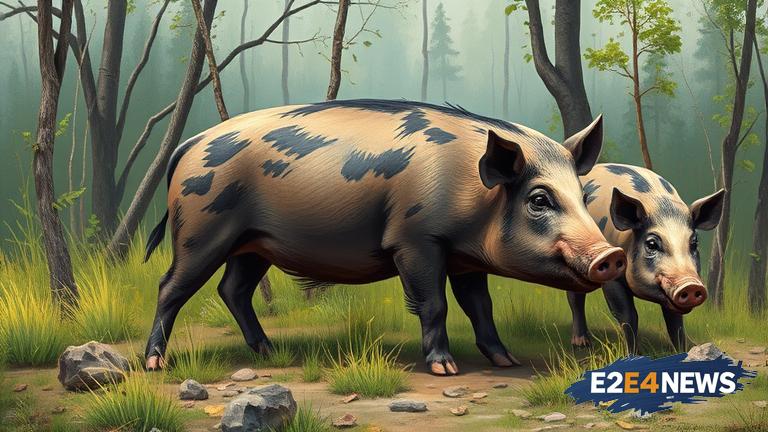The state of Georgia is facing a significant challenge in the form of a rapidly expanding feral pig population. These invasive animals, also known as wild boars or feral hogs, are causing considerable damage to the state’s ecosystem and economy. The pigs are not native to Georgia and are believed to have been introduced to the area through human activity, such as hunting and farming. As a result, they have no natural predators and are able to reproduce quickly, leading to a population explosion. The feral pigs are omnivores and will eat almost anything, including crops, fruits, and vegetation, which is having a devastating impact on Georgia’s agricultural industry. Farmers are reporting significant losses due to the pigs’ destructive feeding habits, with some estimating that the damage is costing them thousands of dollars per year. The pigs are also causing problems for the state’s wildlife, competing with native species for food and habitat. In addition, the pigs are known to carry diseases such as swine brucellosis and pseudorabies, which can be transmitted to other animals and even humans. The Georgia Department of Natural Resources is working to control the feral pig population through hunting and trapping, but it is an uphill battle. The pigs are highly adaptable and can survive in a variety of environments, making them difficult to eradicate. The state is also working to educate the public about the dangers of feral pigs and the importance of not feeding or approaching them. Despite these efforts, the feral pig population continues to grow, and it is estimated that there are now over 500,000 feral pigs in Georgia. The problem is not limited to rural areas, as the pigs are also being spotted in urban and suburban areas, causing concerns for public safety. In some cases, the pigs have even been known to attack people, especially when they feel threatened or when they are protecting their young. The economic impact of the feral pig infestation is significant, with estimates suggesting that it is costing the state millions of dollars per year. The damage to crops, livestock, and property is substantial, and the state is also spending a significant amount of money on control efforts. The feral pig problem is not unique to Georgia, as many other states are also struggling to contain the population. However, Georgia’s mild climate and abundant food supply make it an ideal location for the pigs to thrive. The state is working to develop new strategies to control the population, including the use of drones and other technology to track and monitor the pigs. In addition, the state is working to promote public awareness and education about the issue, in the hopes that it can prevent the problem from getting worse. The feral pig infestation is a complex issue that will require a long-term commitment to solve. It will require the cooperation of state and local officials, as well as the public, to develop effective strategies to control the population and mitigate the damage. The state is also working to develop new regulations and laws to prevent the introduction of feral pigs to new areas and to promote responsible hunting and farming practices. Overall, the feral pig infestation is a significant problem that is having a major impact on Georgia’s ecosystem and economy. It will require a sustained effort to solve, but with the right strategies and public awareness, it is possible to control the population and prevent further damage.
